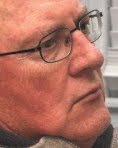

In this post we will use two multiple feedback (MFB) 2nd order band pass filters (see the previous post) to build a 4th order band pass filter. See Fig. 1 for the schemtic and the figure below for the SPICE AC analysis results (click on the figures for a larger view.) This method uses two filters with staggered tunning so that a flat band pass can be obtained. We will use Bessel parameters so that we obtain linear phase shift performance. Refer to Texas Instruments Active Filter Design Techniques Literature Number SLOA088 for a good description of the complete theory for this approach.
Lets design the 4th order band pass Bessel filter with the following specifications:
Center frequency Fm = 1000
Bandwidth B = 100
Q Q = Fm / B = 10
Center gain Km = 1 absolute value
The Bessel coefficients for a Q of 10 are
a1 = 1.3617
b1 = 0.6180
A quantity called alpha is also associated with the Bessel coefficients for a Q of 10. We will call alpha the quantity "a" in the following.
a = 1.0324
The tuning frequencies of the 2nd order sections is
Fm1 = Fm / a = 968.6
Fm2 = Fm * a = 1032
The Q or quality factor for both 2nd order sections is the same:
Q12 = Q * ( 1 + a^2 ) * b1 / ( a * a1) = 9.08
The gain of both sections is the same and the absolute value is
K12 = ( Q12 / Q ) * ( Km / b1 )^0.5 = 1.155
We will define the same capacitor value for all the capacitors in both sections as
C = 0.01 * 10^-6 Farad
So now we can compute the resistor values shown in Fig. 1.
For filter section no. 1 (see Fig. 1)
R2 = Q12 / ( Pi * Fm1 * C ) = 298.4K
R1 = R2 / (2 * K12 ) = 129.2K
R3 = K12 * R1 / ( 2 * Q12^2 - K12 ) = 911 ohms
And for filter section no. 2 we have
R6 = Q12 / ( Pi * Fm2 * C) = 280K
R5 = R6 / ( 2 * K12 ) = 121.2K
R7 = K12 * R12 / ( 2 * Q12^2 -K12 ) = 855 ohms
We have now specified the filter, assigned the value for the capacitors, and computed the resistor values as shown in Fig. 1 (click on the figure for a larger view.) The simulation results are shown below Fig. 1. The simulation results show that the filter does indeed have a center frequency of 1KHZ and a bandwidth of 100HZ at -3db points according to our specifications. Note that a high Q analog filter like the one we designed will not in general be stable for step or pulse transient signals but it will work fine for steady state or slowly varying sine wave input signal.















